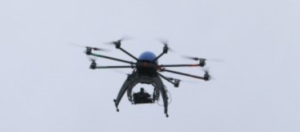Bomb Sniffing Drones- Game Changer in Fight Against Terrorism?

By Debbie Gregory.
In what could potentially be really good news in fighting terrorism and really bad news for terrorists, researchers at the University of Wisconsin at Madison have developed drones that can detect improvised explosive devices and active land mines.
The technology can detect chemical and nuclear weapons and drugs. Robot drones can be used for combat, decoys, reconnaissance, logistics, research and development. Because of these several uses, and the several shapes and sizes drones come in these days, they may be considered the “bomb sniffing” robots of the sky.
The centerpiece of the system is a device that paints a target area with neutrons. Then sensors look for gamma rays with the signatures of specific materials such as explosives or a nuclear device. It’s the same technology used at security checkpoints to scan luggage and shipping containers in airports, but the breakthrough for the UW-Madison scientists was making the radiation source small enough to mount on a drone.
This technology would allow military convoys to be alerted to roadside bombs. Rescuers could dig directly toward people buried by earthquake rubble. Valuable mineral deposits could be mapped.
Jerry Kulcinski, an internationally renowned scientist and longtime adviser for NASA, believes it’ll take about a year to get the system into the field — if they can find a company to buy it or fund it to completion.
Col. John W. Weidner, who helps manage of the US Department of Energy’s National Nuclear Security Administration, , envisioned scenarios where the United Nations would use the drones in Syria after hostilities end there to verify whether all its chemical weapons were destroyed, or in Iran to determine whether that country is making nuclear weapons.
“I see all sorts of different opportunities if this can be adopted by the appropriate agencies in our government,” he said. “Intelligence agencies could find in a relatively passive, relatively quiet, no-person way what materials are in particular locations. That could be very powerful to them.”
The technology is also very cost-effective. Instead of spending money for expensive tracked vehicles that roll up to a suspicious package, identify and maybe detonate it, military and police agencies “can fly a drone over it, irradiate it and find out it’s full of flour,” said Weidner.
Because the breakthrough was so recent, there has been little time for critical assessment of the technology.
Military Connection salutes and proudly serves veterans and service members in the Army, Navy, Air Force, Marines, Coast Guard, Guard and Reserve, and their families.

















